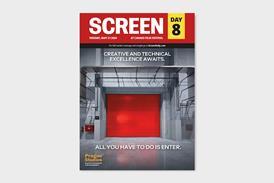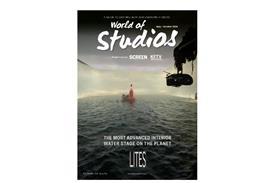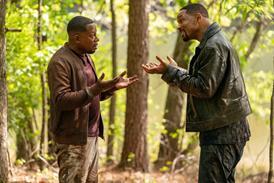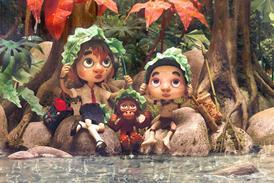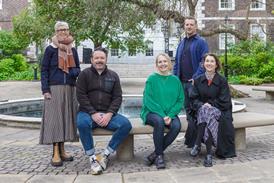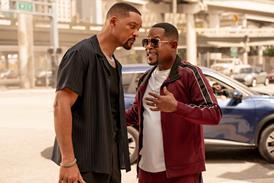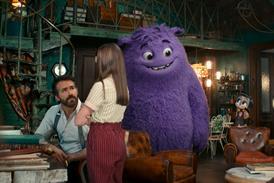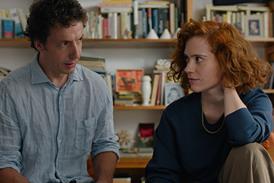The first part of Kevin Costner’s over-stuffed Western epic rides into Cannes

Dir: Kevin Costner. USA. 2024. 181mins
Kevin Costner’s long-gestating frontier Western was originally conceived as a single film in 1988; from recent statements he has made, it is now two, possibly three features – maybe even four if all goes well. On the evidence of Chapter One, a three-hour sprawl that premieres out of competition in Cannes and is due to be released in multiple territories on June 28, Horizon: An American Saga is still suffering from an identity crisis. Beautifully shot, with a deft command of period detail and a starry ensemble cast, Costner’s Civil-war set epic offers an old-fashioned celebration of the pioneer spirit – and a clutch of storylines that never quite have time to engage before the film moves on.
An old-fashioned celebration of the pioneer spirit
It’s curious that, almost 35 years on from Dances With Wolves – a revisionist Western that still feels radical in the way it reframed the genre’s moral and narrative point of view to Native American peoples – Costner has turned traditionalist in Horizon. That’s in the nature of the well-researched story, co-written by Costner and newcomer Jon Baird, which centres on the enormous challenges facing early settlers in the American West, who were trying to make a life in an untamed land which didn’t belong to them. But you choose your stories, and the single, underdeveloped narrative thread that is dedicated to a First Nation community here feels like a corrective, rather than a commitment.
Audiences in the mood for a lush, old-fashioned Utah-shot saddle saga will probably not be disappointed, though they will almost certainly skew to an older demographic – which includes the legions of fans who have made his Yellowstone TV show (which he has now left) a multi-series hit. But even an audience who may have enjoyed Costner’s pensive Montana bullet ballet Open Range (2003) risk being alienated by Horizon’s bracingly abrupt pivots between its various stories.
Four central strands are introduced by onscreen titles, with only the first bearing a date: ‘San Pedro Valley, 1859’. All revolve around a single destination: the settlement of Horizon, a fictitious plot of land deep on Native American territory in an Arizona valley which an unscrupulous developer has been marketing as a homesteader’s paradise. Costner himself makes an appearance fairly late on as Hayes Ellison, a mysterious loner straight out of the Clint Eastwood copybook – a taciturn, battleworn man who is as weary of drawing his gun as he is good at using it.
After brushing with the film’s most interesting character – a brutal, cocky gunslinger played with gusto by Jamie Campbell Bower as a kind of grunge-rock psychopath – Hayes will go on the run with Abbey Lee’s Marigold, perhaps towards some convergence with the other tales that are spun here – though not all is revealed in this first chapter.
The final story in this first part of the saga, which arrives a good way in, is a perfect example of how the film moves between fascination and frustration. It follows a wagon train on the Santa Fe trail in Western Kansas, about to make the hazardous crossing of the waterless Cimarron Desert. One of the wagons belongs to an airily refined young British couple played by Ella Hunt and Tom Payne, who are headed for Horizon. Caught up in each other, their books and sketches, they are so oblivious of this settler convoy’s shared work ethic that they earn a rebuke from the group’s reluctant elected leader Matthew van Weyden (Luke Wilson). This is intriguing: wagon-train Westerns usually stress the solidarity of this isolated mobile community, not its fractures. But because there is so much pressure to cut back to one of the other suspended storylines, the theme is snatched away before it can be fully explored.
Horizon itself – a wild, beautiful swathe of riverine scrubland – fills up most of the first hour, and provides the background for a thrilling action sequence set largely inside a settler family’s wooden cabin during an Apache attack which turns into a full-scale massacre. Up there with the final shootout in Open Range, this scene shows Costner once again embedding dramatic tension in realism: bullets fumbled while loading, escape tunnels that were never provided with breathing holes.
It’s left to US Army lieutenant Trent Gephardt (Sam Worthington) to redress the narrative by telling the survivors that they were never authorized to settle here, away from where the over-stretched military can protect them – and what kind of fool even tries to build a town on an Apache river crossing? This speech dispatched, Worthington’s upright military man serves mostly as the awkward suitor of one of those survivors – Sienna Miller’s hardy widow Frances Kittredge, who does her best to give some emotional heft to a cliched role.
Cinematographer J Michael Muro makes the most of the widescreen landscapes. There’s a horseback chase shot by moonlight and views down great eroded gullies sculpted by wind and water, all folded into a compelling vision of a land that would still, for a few fragile years, be a place of wonders. A hasty montage of random new scenes that serve as a ‘Coming Next’ coda suggests that Costner has a lot more to say.
Production company: Territory Pictures Production
International sales: Territory Pictures, howard@hjklegal.com
Producers: Kevin Costner, Howard Kaplan, Mark Gillard
Screenplay: Jon Baird, Kevin Costner
Cinematography: J. Michael Muro
Production design: Derek R. Hill
Editing: Miklos Wright
Music: John Debney
Main cast: Sienna Miller, Sam Worthington, Danny Huston, Michael Rooker, Kevin Costner, Jena Malone, Michael Angarano, Abbey Lee

